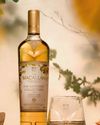
If you find yourself in South Korea and decide to indulge in top-grade beef, chances are you’ll encounter Hanwoo, a native breed that has roamed the Korean peninsula for over 2,000 years. But it’s not just any old cow. Like the better-known Japanese Wagyu, Hanwoo boasts exceptional marbling, only with less fat content, and a distinctive, robust flavour that sets it apart.
Raised free-range in the South Korean countryside, Hanwoo cattle thrive on a diet of grain or grass and occasionally beer-enriched feed. Its high price tag is driven by quality and the fact that demand significantly exceeds supply. South Korea has even less land for rearing its indigenous cattle than Japan; and Hanwoo are smaller creatures. This scarcity, coupled with the breed’s superior attributes, places Hanwoo in the same league as Wagyu.
The importance of Hanwoo in Korea goes far beyond the kitchen. Before the 1960s, Korea was primarily an agrarian society where cattle were indispensable for farming. “Cows were the main labour force of agriculture, responsible for tasks such as ploughing fields, carrying heavy loads and other necessary duties,” explains Yoon Won-suk, executive chef at Byeokje Galbi, a restaurant in Seoul renowned for its barbecued beef short ribs since 1986. “They even played a part in solving economic problems because they were sold when a large amount of money was needed [by farmers].” These cows were so valuable that butchering them was reserved for the wealthy or elite, making Hanwoo a symbol of prosperity and abundance.
この記事は Tatler Singapore の September 2024 版に掲載されています。
7 日間の Magzter GOLD 無料トライアルを開始して、何千もの厳選されたプレミアム ストーリー、9,000 以上の雑誌や新聞にアクセスしてください。
すでに購読者です ? サインイン
この記事は Tatler Singapore の September 2024 版に掲載されています。
7 日間の Magzter GOLD 無料トライアルを開始して、何千もの厳選されたプレミアム ストーリー、9,000 以上の雑誌や新聞にアクセスしてください。
すでに購読者です? サインイン

A Family Jewel
Fanty Soenardy unveils the crowning jewel of her vault-a Chaumet tiara that she dreams of passing down to her daughter on her wedding day

GROWTH MINDSET
Three women entrepreneurs share their smart habits to managing money and growing wealth—and doing so meaningfully with purpose

A Classic Redefined
Through the organic beauty of wood veneers, Steinway & Sons' limited edition Masterpiece 8X8 explores an alternative to the established aesthetic of pianos

Oak Artistry
Born of a collaboration with contemporary circus producer Cirque du Soleil, Vibrant Oak, the fourth release in The Macallan's Harmony Collection, pays homage to the Scottish whisky house's rich history with oak and the sherry-seasoned oak casks central to its heritage

Full Potential
Philippine tourism is buzzing with activity, and Christina Garcia Frasco is at the forefront of it all

Live & Learn
When Anthonia Hui and Leonardo Drago still lived in Hong Kong nearly three decades ago, they came across a beggar on the streets. “Just as I was about to pull out my wallet, Leo held my hand and said, ‘How do you know he’s not scamming you?’”

Hip to Be Square
Patek Philippe launches Cubitus, its first new collection in 25 years, in Munich, Germany, debuting three sporty and elegant watches By Annabel Tan

Marine Wonders
Rolex's Perpetual Planet Initiative and Mission Blue join forces to support the conservation of Indonesia's island paradise of Nusa Penida and its magnificent biodiversity

Deep Purpose
Rolex champions environmental conservation through its Perpetual Planet Initiative, which supports ocean-focused organisations such as Sylvia Earle's Mission Blue and Titouan Bernicot's Coral Gardeners

Grand Designs
When it comes to grand touring, few carmakers can boast the storied history of Maserati, which has been producing vehicles that embody grand touring's golden era, which originated in the mid-20th-century, for more than 75 years.